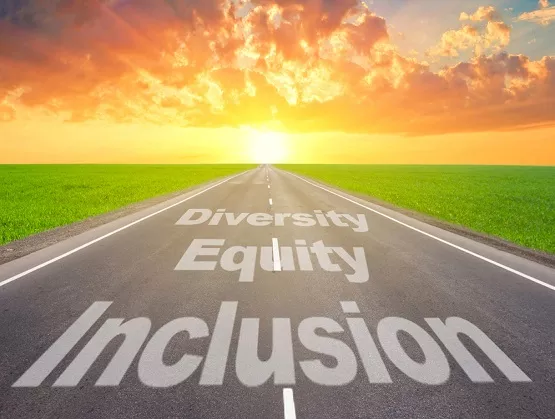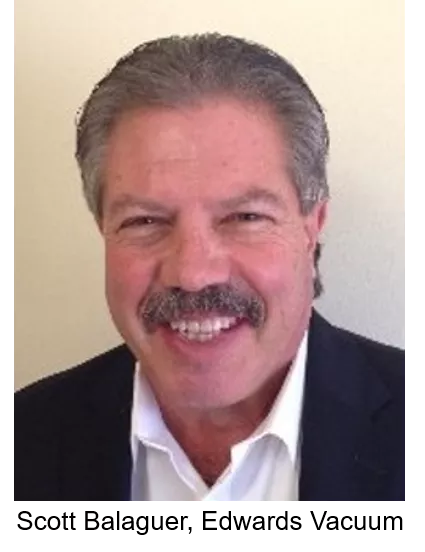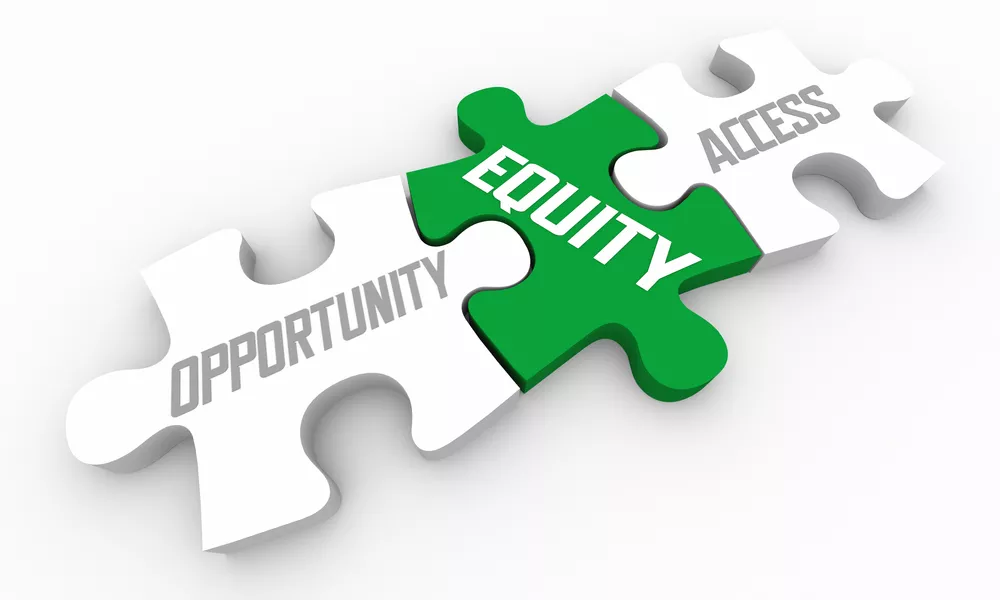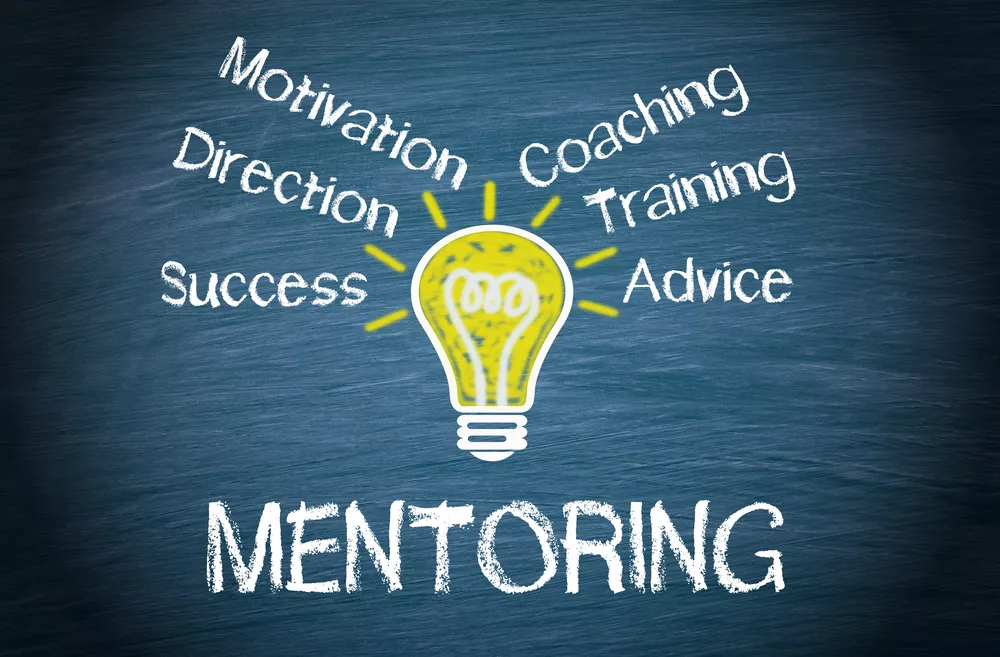
What can you learn about Diversity, Equity, Inclusion and Retention from an old, white dude?
As it turns out, quite a lot. I must admit, as an older, white male I was reluctant to author a blog on diversity, equity, inclusion and retention. Some might feel that I am the least likely person ever to be knowledgeable on this subject.
But on the topic of building a more diverse and inclusive workplace I do have some knowledge to share. And, as a co-chair of SEMI’s North American Advisory Board (NAAB) and Vice President & General Manager, Semiconductor Division at Edwards, I feel a particular responsibility to share our journey. Not because Edwards is a shining example of DEIR (Diversity, Equity, Inclusion and Retention) but because we believe in it, have committed significant resources to the program and are in it for the long haul. Plus, we have learned a few things along the way.
It is my hope that by sharing some of our story and openly discussing mistakes we have made, everyone can learn.
Change does not happen overnight
 It’s all about the journey and that’s why we are committing to a DEIR plan and roadmap. I fully recognize it will take time to do this right and that there will be course corrections along the way. Changing minds, policies, procedures and corporate culture is a tall order and it will not happen overnight.
It’s all about the journey and that’s why we are committing to a DEIR plan and roadmap. I fully recognize it will take time to do this right and that there will be course corrections along the way. Changing minds, policies, procedures and corporate culture is a tall order and it will not happen overnight.
Why Diversity? Why women? What about intersectionality?
We all know that striving towards diversity, equity, inclusion, and retention is the right thing to do – both morally and from a business perspective. Companies with a diverse workforce show overall improvement in decision making and problem solving, employee engagement and retention, and company reputation.
At Edwards, we have a long way to go to balance our workplace to reflect and include everyone in our community.
Initially, we set a goal of 30% female representation by 2030. Since women represent 51% of the population, we believed we would make a bigger and more immediate impact by focusing first on increasing the number of women in our workplace. But there’s a problem with that strategy: Addressing only gender in a DEIR program ignores and excludes other disenfranchised groups and further widens the gap. So now we are looking at our DEIR initiatives through a lens of intersectionality* to address goals for increasing representation of all groups.
Building a foundation
 In late 2019, we began to formalize our diversity efforts by establishing a team of champions representing all levels within the organization. We took a long look at how we operate and who is represented within our leadership and our teams. We asked hard questions such as “Are we encouraging diversity and are we utilizing it fully to grow innovation? Are we removing obstacles and putting processes and programs in place that enhance inclusion?” The answer? “We can do much better.” So we began to build an organizational structure to support improvement.
In late 2019, we began to formalize our diversity efforts by establishing a team of champions representing all levels within the organization. We took a long look at how we operate and who is represented within our leadership and our teams. We asked hard questions such as “Are we encouraging diversity and are we utilizing it fully to grow innovation? Are we removing obstacles and putting processes and programs in place that enhance inclusion?” The answer? “We can do much better.” So we began to build an organizational structure to support improvement.
COVID aside, we accomplished a lot in 2020 toward building a DEIR foundation, including the establishment of:
- Retention as a strong focus of our initiative
- Internal diversity champions
- DEIR mission statement
- Intersecting DEIR Council and Committee with charters
- DEIR Communication Plan
In addition, we are in the process of building a DEIR Roadmap, establishing benchmarks and launching a dashboard. We are in the beginning stages but our team is talented and committed. And so far, we have learned a few things:
Communication is critical
Communication could not be more important, and consistency is critical. Employees want to know what is happening. They want to be a part of the plan and have their voices heard. And make no mistake – they are watching to see if DEIR is just another ‘flavor of the month’ plan that will soon fade from view. Our marketing team authored a DEIR Marketing plan first thing, and a key component has been to have multiple methods to share information regularly throughout the organization. We do this through newsletters, the Council, the Committee and at Town Hall meetings. The key has been to be transparent, honest and consistent in what we have to say. Keeping people informed and a part of the process has been important in maintaining a high level of interest and participation throughout the organization.
Best practices include learning from our mistakes
I believe that best practices should reference mistakes made – that’s how we learn. In the early stages of developing our DEIR program, we did make some mistakes. I believe that by sharing those, we validate our commitment and enhance our credibility.
Ensure your benchmark data is clean
 To validate progress we must be able to measure our success and in this arena: data is king. Our team planned to identify relevant data, establish baseline numbers and quantify gaps while measuring impact in the areas of recruitment, hiring, inclusion and retention. The trouble was, the more we looked at our initial data, it became clear that much of it was flawed due to faulty collection procedures. So we made the decision to go back, recollect and verify our baseline data. We lost months in the process, but we are now confident that our results will be solid.
To validate progress we must be able to measure our success and in this arena: data is king. Our team planned to identify relevant data, establish baseline numbers and quantify gaps while measuring impact in the areas of recruitment, hiring, inclusion and retention. The trouble was, the more we looked at our initial data, it became clear that much of it was flawed due to faulty collection procedures. So we made the decision to go back, recollect and verify our baseline data. We lost months in the process, but we are now confident that our results will be solid.
Do not lean primarily on human resources
Human resources cannot single-handedly carry the DEIR load – nor should they. While HR is a significant source of data and the seat of recruitment and hiring policies, it should not be the center of the DEIR universe. It is important to share the responsibility and spread the participation throughout the organization. This not only lessens the load for HR, but shared responsibility ensures a diversity of thought and experience as we revise our policies, procedures and offerings.
For us, relying on HR felt natural but due to limited staff, we ended up overburdening the team, which significantly slowed our progress. We now share DEIR leadership amongst the Council, Committee, and several divisions. It is notable that the Learning & Development team has become a real champion by focusing on recruitment, retention and career development strategies. By balancing responsibility amongst various divisions within the organization, we now move more quickly.
Mentoring delivers multiple results
 Mentoring is an initiative that supports recruitment as well as retention – two of the biggest issues feeding the talent crisis in our industry. Mentoring provides a golden opportunity to brand our companies throughout the mentoring process. We know that candidates are drawn to companies that provide career enhancement tools such as mentoring and have a strong corporate social responsibility profile. Moreover, a well-run mentoring plan is simply good business sense in terms of succession planning.
Mentoring is an initiative that supports recruitment as well as retention – two of the biggest issues feeding the talent crisis in our industry. Mentoring provides a golden opportunity to brand our companies throughout the mentoring process. We know that candidates are drawn to companies that provide career enhancement tools such as mentoring and have a strong corporate social responsibility profile. Moreover, a well-run mentoring plan is simply good business sense in terms of succession planning.
Mentoring is a measurable way to improve recruitment and retention. At Edwards, we have offered informal mentoring throughout the years. We also have participated in SEMI’s formal mentoring program. With recruitment and retention being significant challenges for us, growing a mentoring program as a key component of our DEIR program has gained a high level of importance. I enthusiastically encourage participation in SEMI’s mentoring program as a tangible benefit of SEMI membership that supports DEIR.
Looking ahead
For Edwards, our DEIR journey has just begun and sometimes it feels that we are taking one step forward and two steps back. But we are making progress, and I am very optimistic that we will achieve long-lasting, positive change.
 The biggest DEIR advantage in our membership at SEMI is that it provides a forum for sharing best practices with other companies. In the coming weeks, SEMI will publish its Roadmap to Diversity, Equity, and Inclusion and the SEMI DEI Toolkit. These documents include guidelines and research to support any company on a DEI journey. The roadmap and toolkit provide both big-picture DEI perspectives on our industry and real-time tools such as a how-to guide on creating more diverse and inclusive events. They will be important resources for all of us.
The biggest DEIR advantage in our membership at SEMI is that it provides a forum for sharing best practices with other companies. In the coming weeks, SEMI will publish its Roadmap to Diversity, Equity, and Inclusion and the SEMI DEI Toolkit. These documents include guidelines and research to support any company on a DEI journey. The roadmap and toolkit provide both big-picture DEI perspectives on our industry and real-time tools such as a how-to guide on creating more diverse and inclusive events. They will be important resources for all of us.
Throughout this journey, we will continue to work with our colleagues in the SEMI community and particularly within the NAAB to share expertise and advice. My good friends and colleagues Emerald Grieg and Lubab Sheet-Davis, both of them members of this board, are passionate on the subject and will be important drivers in our discussion. In the meantime, I will look forward to hearing from others about their DEIR journey and welcome comments and suggestions on this topic from readers.
Scott Balaguer is Vice President & General Manager, Semiconductor Division at Edwards Vacuum LLC and Chairman of the SEMI North America Advisory Board.
Edwards is a division of Atlas Copco, a global company with a diverse workforce doing business in more than 180 countries. Atlas Copco is a long-standing champion of DE&I who believes that diversity makes good business sense and is a driver of innovation. Atlas Copco supports Edwards’ unique corporate identify through country specific diversity initiatives.
*Intersectionality is an analytical framework for understanding how aspects of a person's social and political identities combine to create different modes of discrimination and privilege. The term was conceptualized and coined by Kimberlé Williams Crenshaw. Source: Wikipedia